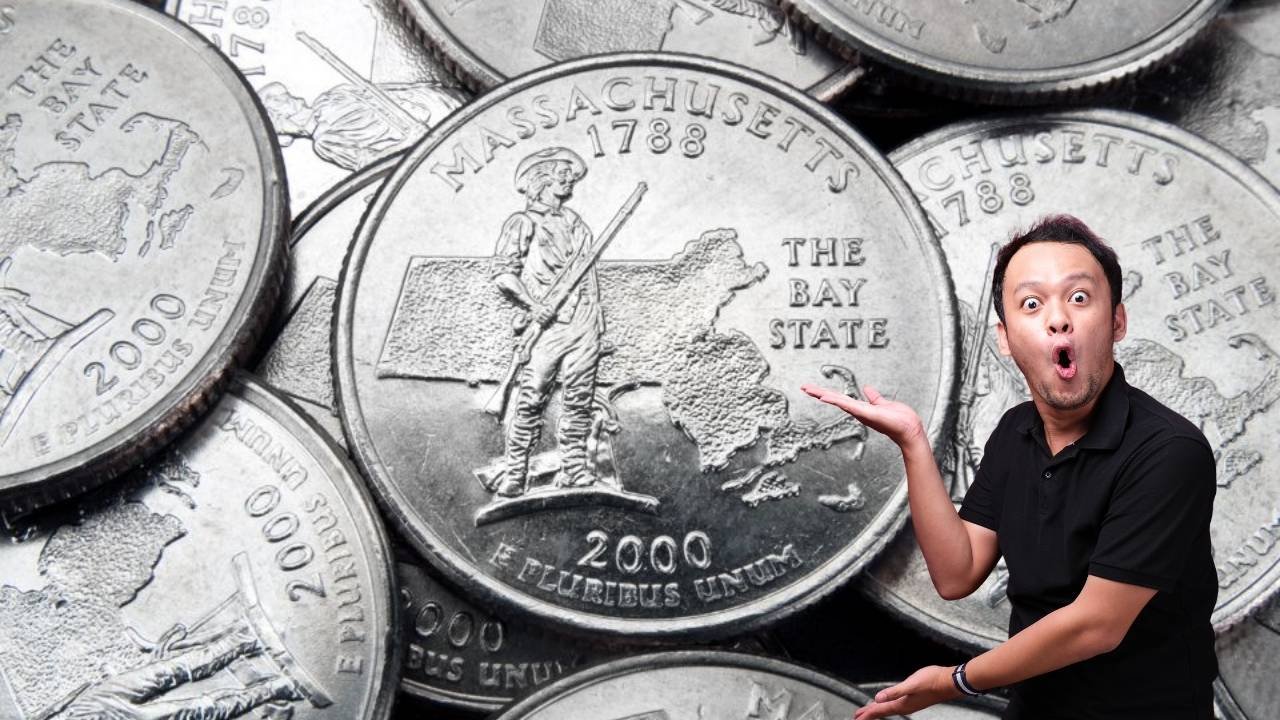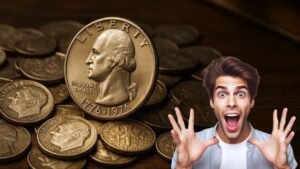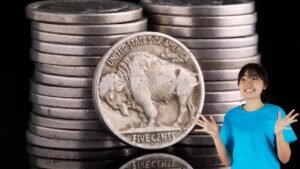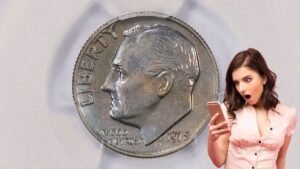Coin collecting has turned into one of the most exciting hobbies in the U.S., especially after the launch of the 50 State Quarters Program in 1999. While billions of these coins were minted, only a handful are rare and valuable. Some errors, unique varieties, and limited runs have made certain state quarters worth hundreds—or even thousands—of dollars.
If you’ve got a jar of loose change, here are the top five valuable state quarters you should be on the lookout for.
1. 1999 Delaware Quarter – “Spitting Horse” Error
This coin features Caesar Rodney on horseback, but some versions have a die crack that makes it look like the horse is spitting.
- Mint Year: 1999
- Error Type: Die crack (Spitting Horse)
- Value: $25–$300
Collectors love this error because it’s easy to spot and has become one of the most famous in the program.
2. 2004 Wisconsin Quarter – Extra Leaf Error
One of the most valuable state quarters, the Wisconsin coin shows a corn stalk with an accidental extra high or low leaf.
- Mint Year: 2004
- Error Type: Extra leaf (high/low)
- Value: $200–$1,500
In pristine condition, these coins can bring thousands of dollars at auctions.
3. 2000 New Hampshire Quarter – Missing Clad Layer
The “Old Man of the Mountain” design is iconic, but some quarters were minted without their nickel-clad layer, exposing the copper core.
- Mint Year: 2000
- Error Type: Missing clad layer
- Value: $100–$600
The reddish look makes this error coin easy to recognize and highly collectible.
4. 1999 Connecticut Quarter – Double Die Error
This design highlights the famous Charter Oak tree. Some coins show doubling in the branches, creating a blurred effect.
- Mint Year: 1999
- Error Type: Double die
- Value: $50–$1,000
Depending on the clarity of the doubling, values can jump significantly.
5. 2005 Kansas Quarter – “In God We Rust” Error
A grease-filled die caused the “T” in “Trust” to be missing, leaving the funny phrase “In God We Rust.”
- Mint Year: 2005
- Error Type: Grease-filled die
- Value: $50–$300
This quirky error has made the Kansas quarter a collector favorite.
Quick Value Table
| State Quarter | Year | Error Type | Value Range |
|---|---|---|---|
| Delaware | 1999 | Spitting Horse | $25–$300 |
| Wisconsin | 2004 | Extra Leaf (high/low) | $200–$1,500 |
| New Hampshire | 2000 | Missing Clad Layer | $100–$600 |
| Connecticut | 1999 | Double Die | $50–$1,000 |
| Kansas | 2005 | “In God We Rust” | $50–$300 |
Why Are Some State Quarters Valuable?
The U.S. Mint released 50 unique designs between 1999 and 2008. While most were mass-produced, certain minting errors and variations made some far rarer than others. Collectors pay a premium for coins with these mistakes, especially in uncirculated or mint condition.
How to Identify Valuable State Quarters
- Look for strange markings, doubling, or missing details
- Check the weight and color (missing clad errors look coppery)
- Use a magnifying glass for small details
- Compare with images from trusted coin guides
- Consider getting rare finds professionally graded
FAQs
Q1: Are all state quarters worth money?
No, most are only worth 25 cents. Only rare error coins or high-grade uncirculated examples carry extra value.
Q2: Can I still find these valuable quarters in circulation?
Yes, although rare, they occasionally show up in pocket change or coin rolls.
Q3: Where can I sell valuable quarters?
You can sell them to coin dealers, at auctions, or through online marketplaces like eBay.
Q4: Does condition affect value?
Absolutely. Coins in mint state (uncirculated) condition sell for much higher prices.
Q5: Should I clean my coins before selling?
No. Cleaning can damage the surface and lower the coin’s value.
Conclusion
The most valuable state quarters prove that everyday change can hide hidden treasures. From the Delaware “Spitting Horse” to the Kansas “In God We Rust,” these coins are sought after by collectors and investors alike. Next time you check your spare change, look closely—you might just be holding a coin worth hundreds of dollars.



